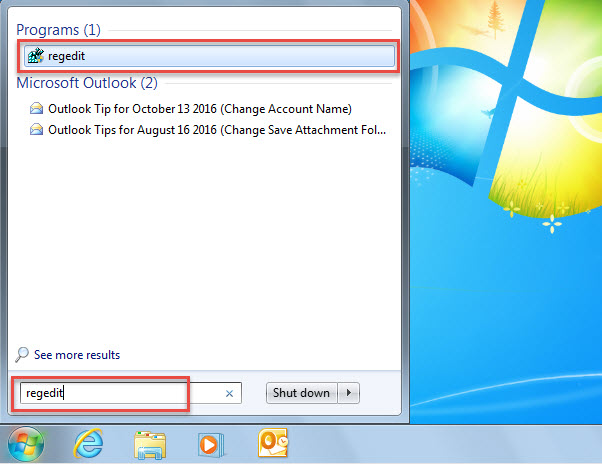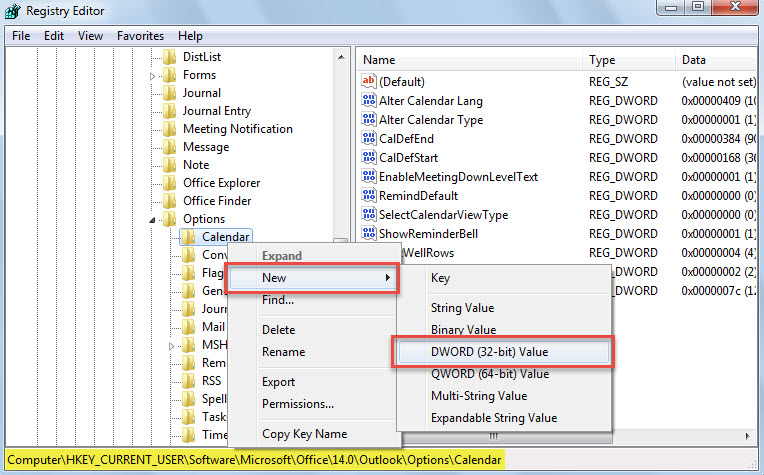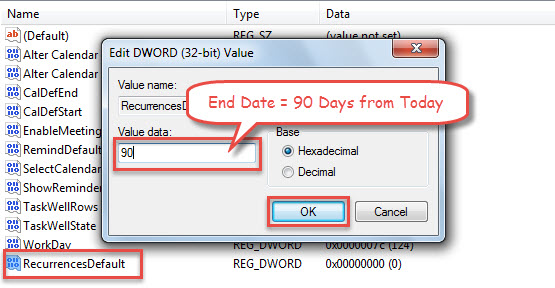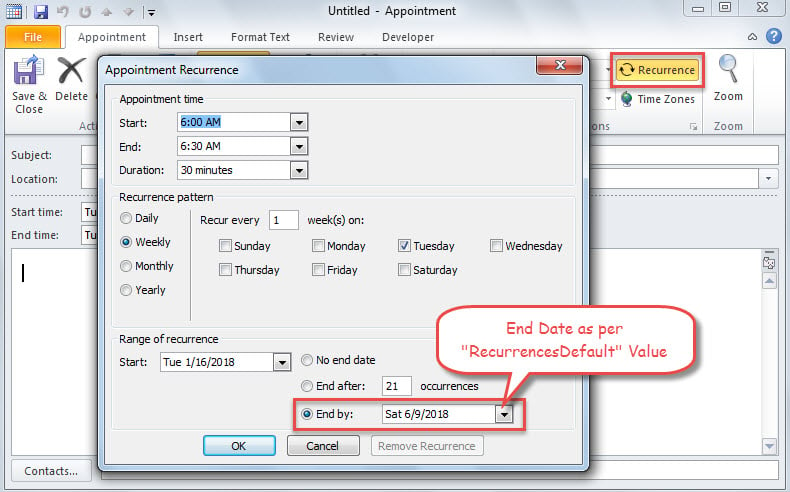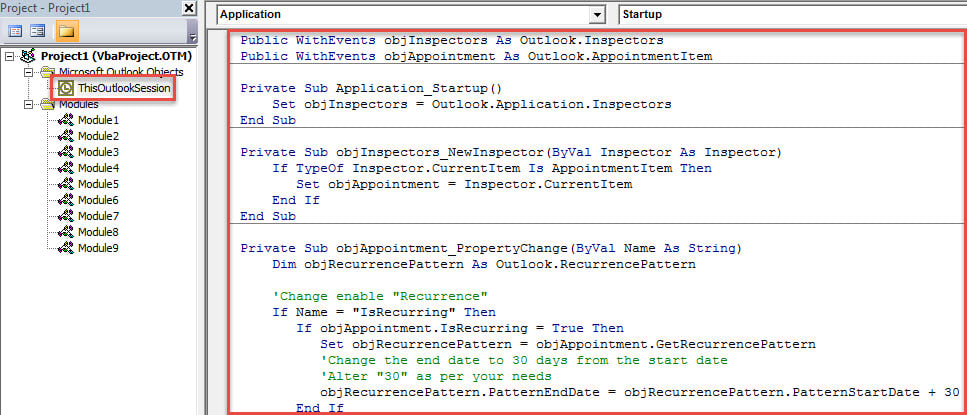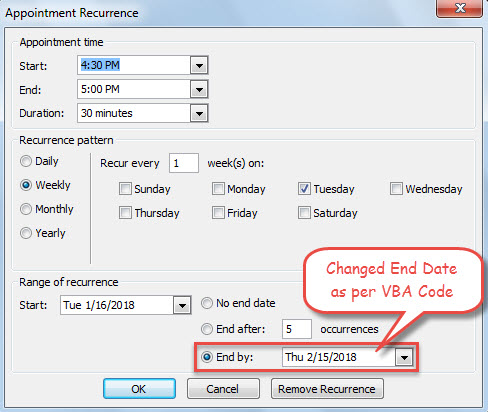In Outlook, when you enable “Recurrence” for an appointment, by default, it will be set with no end date. If you would like to change it and set a default end date for recurring appointments, you can use the methods introduced in this article.
When you create a new appointment and click “Recurrence” button, in the popup “Appointment Recurrence” dialog box, you can see that “No end date” is selected by default, as shown in the following figure. If you dislike this and want to set a default end date, such as 90 days from the first occurrence, you can read on. Here we will teach you 2 approaches to realize it.
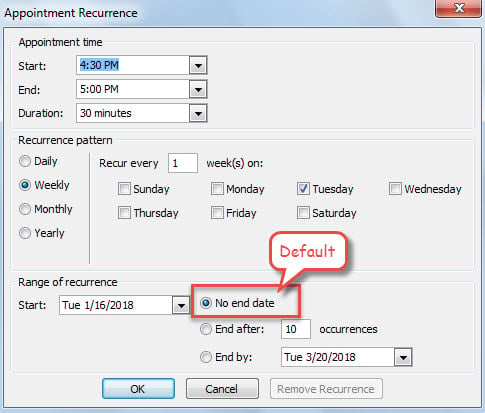
Method 1: Set by Changing Registry
- To begin with, go to “Start Menu” and search “regedit”.
- Then, click on the found “regedit” program.
- Next, “User Account Control” dialog box will display, in which you need click “Yes”.
- After getting into “Registry Editor” window, navigate to the path – ” HKEY_CURRENT_USER\Software\Microsoft\Office\<Outlookversion>\Outlook\Options\Calendar”
- Later, right click the “Calendar” and choose “New” > “DWORD (32-bit) Value”.
- Subsequently, name this new value as “RecurrencesDefault”.
- Next, double click the value.
- In the popup “Edit DWORD (32-bit) Value” dialog box, input a number in the “Value data” field. It refers to the count of days from today. For instance, if it’s “90”, Outlook will set the recurrence end date to 90 days from today.
- Afterwards, click “OK” and exit Registry Editor properly.
- Eventually, restart your Outlook and try to create a recurring appointment. Its end date will be set as per the “RecurrencesDefault” value.
Method 2: Set with Outlook VBA
- For a start, trigger Outlook VBA editor by “Alt + F11”.
- Then, put the following VBA code into “ThisOutlookSession” project.
Public WithEvents objInspectors As Outlook.Inspectors
Public WithEvents objAppointment As Outlook.AppointmentItem
Private Sub Application_Startup()
Set objInspectors = Outlook.Application.Inspectors
End Sub
Private Sub objInspectors_NewInspector(ByVal Inspector As Inspector)
If TypeOf Inspector.CurrentItem Is AppointmentItem Then
Set objAppointment = Inspector.CurrentItem
End If
End Sub
Private Sub objAppointment_PropertyChange(ByVal Name As String)
Dim objRecurrencePattern As Outlook.RecurrencePattern
'Change enable "Recurrence"
If Name = "IsRecurring" Then
If objAppointment.IsRecurring = True Then
Set objRecurrencePattern = objAppointment.GetRecurrencePattern
'Change the end date to 30 days from the start date
'Alter "30" as per your needs
objRecurrencePattern.PatternEndDate = objRecurrencePattern.PatternStartDate + 30
End If
End If
End Sub
- Lastly, click into the “Application_Startup” macro and press “F5”.
- At present, you can create a new appointment.
- Afterwards, click “Recurrence” button, modify the recurrence settings with keeping “No end date”, and click “OK”.
- Later, you can re-click “Recurrence” to check. You will see that the end date has been changed as per your VBA code.
Fix Inaccessible Outlook PST File
Have you ever received any error messages involving “inaccessible PST file” in your Outlook? If you have, how did you deal with them? Maybe Scanpst occurred to your minds in the first place. However when you tried it to fix Outlook, it failed, too. In this scenario, your last resort is either experienced data recovery software like DataNumen Outlook Repair or specialized recovery service.
Author Introduction:
Shirley Zhang is a data recovery expert in DataNumen, Inc., which is the world leader in data recovery technologies, including sql fix and outlook repair software products. For more information visit www.datanumen.com
